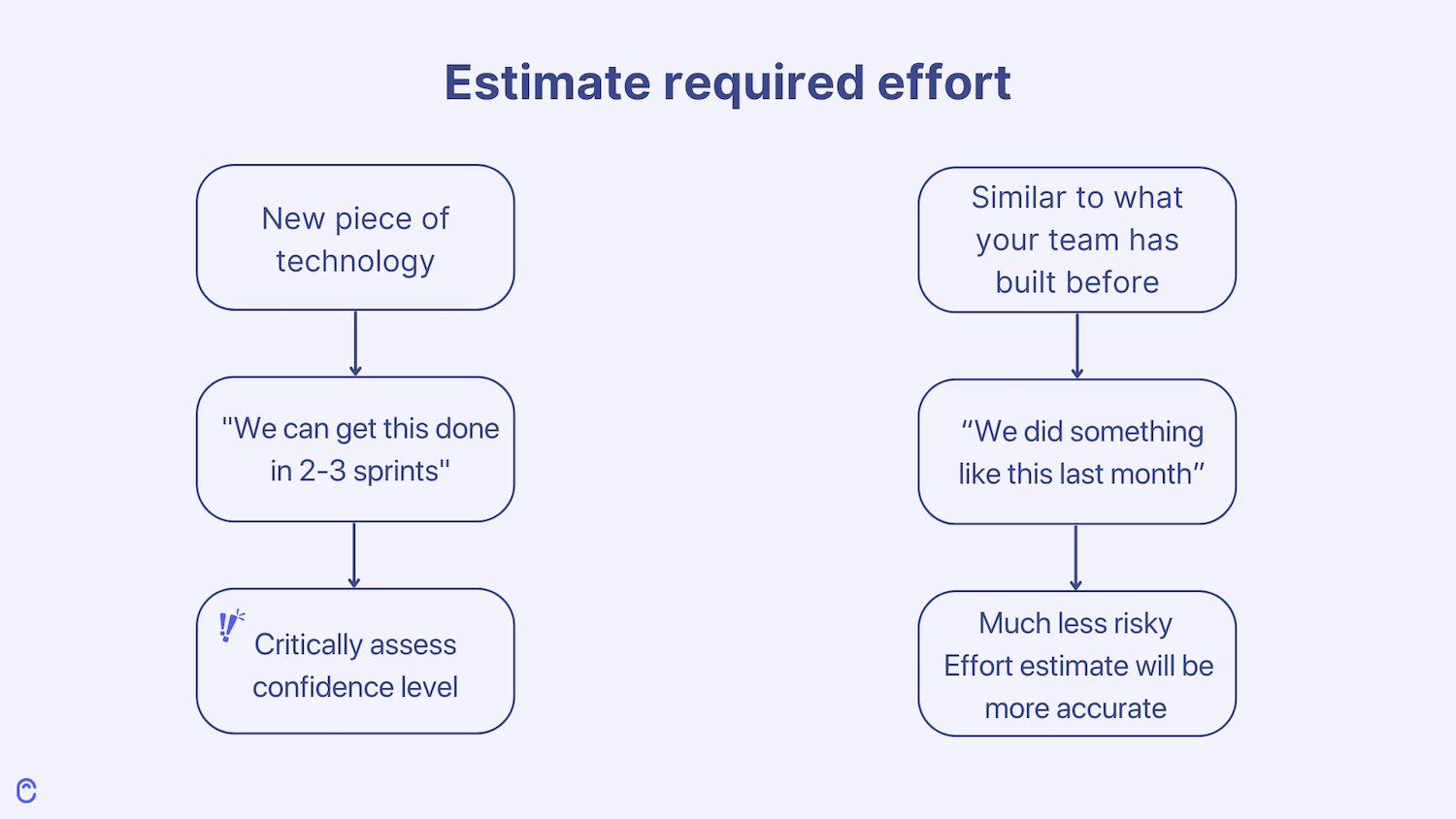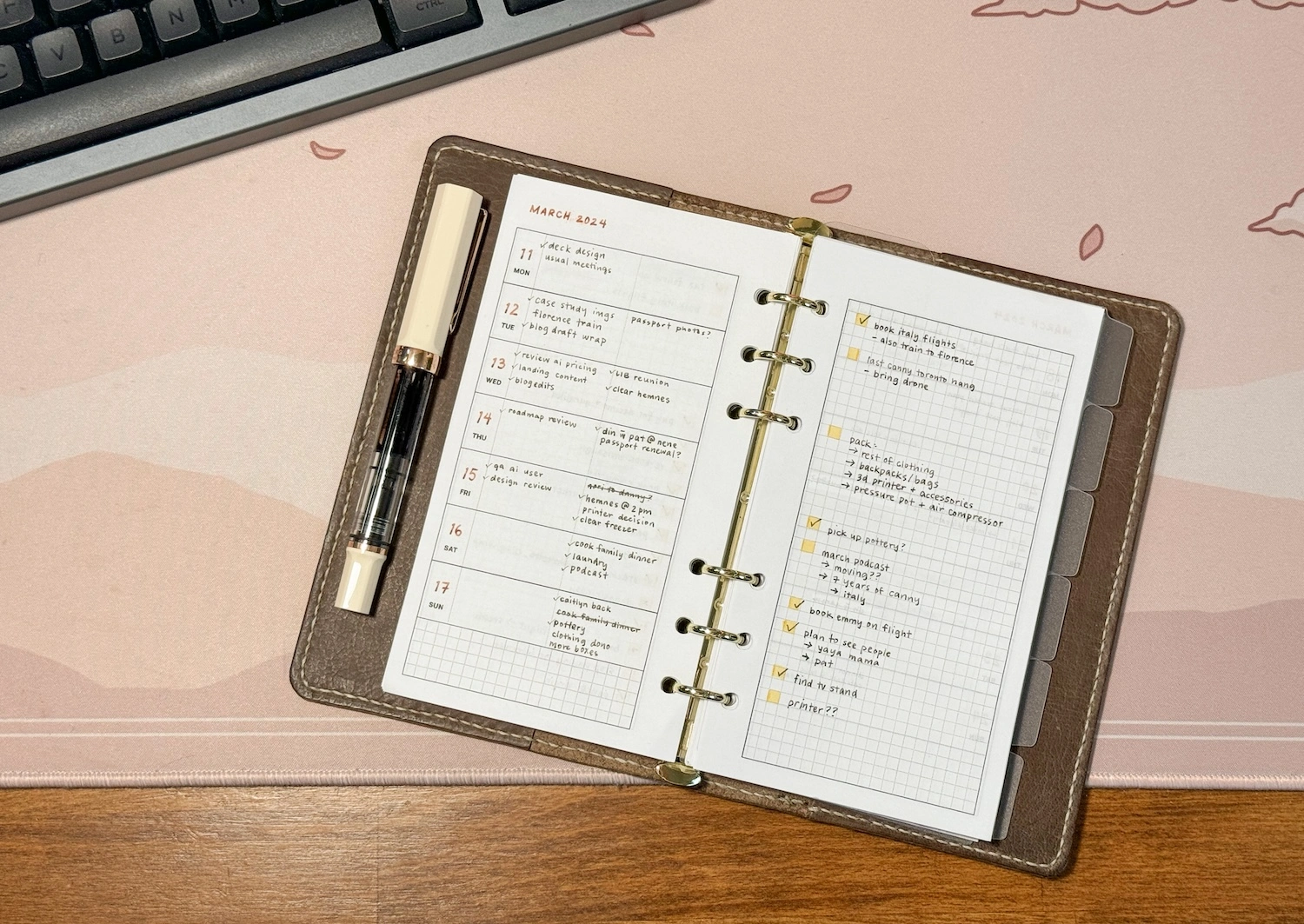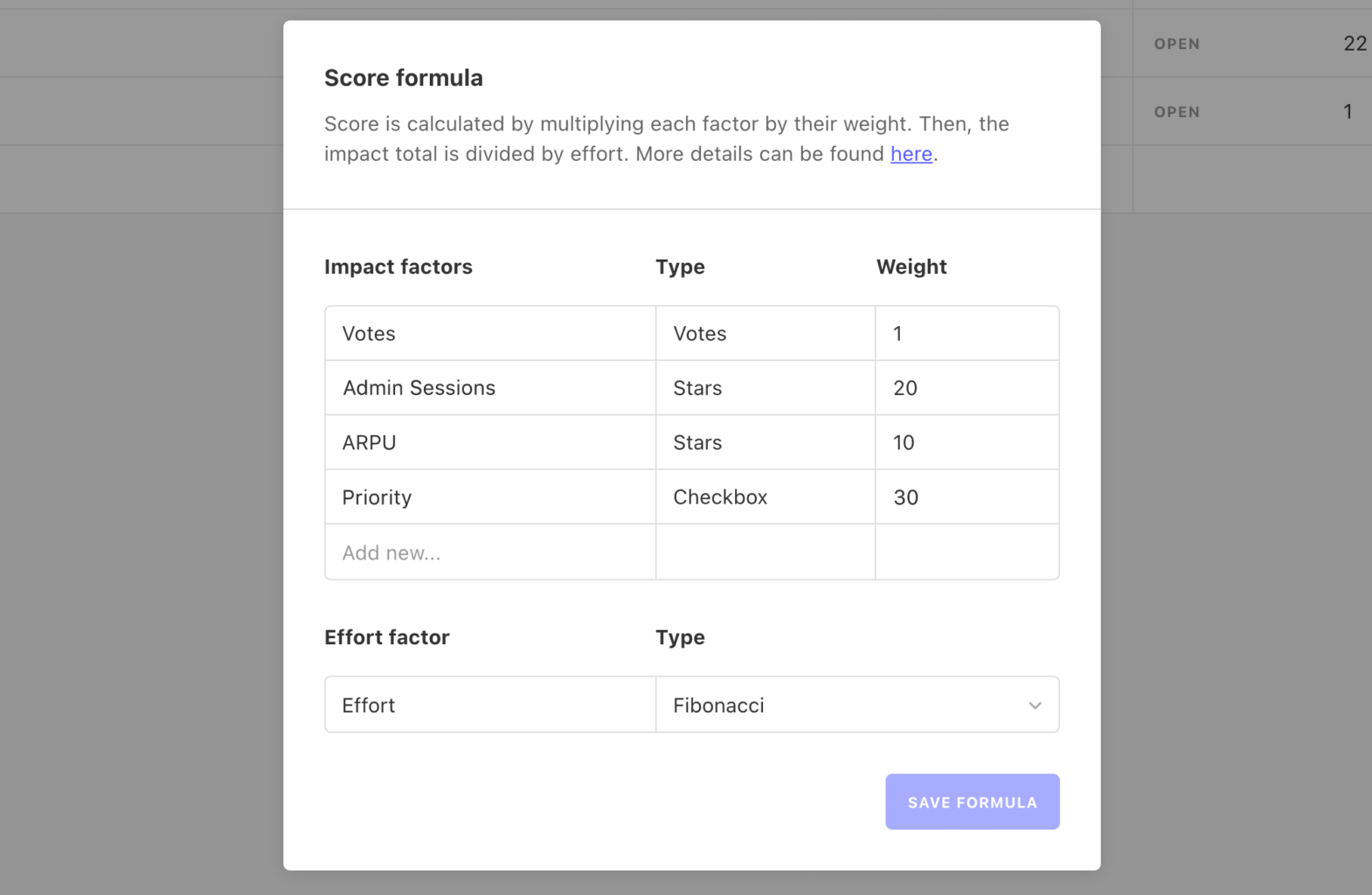People don’t generally associate laziness with excellence. We’re all taught to be hard-working and reach for the moon. But what if laziness was indeed “the mother of invention”?
“I choose a lazy person to do a hard job. Because a lazy person will find an easy way to do it.”
Bill Gates
Let’s apply this to product management. Some experts call this unconventional idea “a lazy product manager approach.” We’ll explore expert opinions and explain what this approach really means.
Achieve more in less time with less effort to stay “lazy”
Some would argue that laziness leads to efficiency. It’s a skill of doing more in less time. Lazy people’s motivation is to do less, so they find creative ways to achieve more while doing less. For some, it means avoiding unnecessary tasks. For others, it’s about automating repetitive tasks. AI might’ve become so widespread for this exact reason! For example, you can automate feedback collection and focus on more strategic and high-impact projects.
We interviewed Anu Kirk, former VP of product at Osso VR, for his perspective. Anu is all about productivity. He doesn’t want to waste his time on ideas with little impact and encourages all product managers to do the same.
We also asked other experts for their efficiency tips: Sarah Hum (co-founder of Canny) and Maarten Dalmijn, owner of Dalmijn Consulting.
Here are a few productivity ideas from them that will help you stay lazy.
Prevent scope creep
Anu’s first piece of advice is preventing scope creep.
Scope creep is also known as “feature creep” or “requirements creep.” It occurs when a project’s requirements increase over time. They literally creep up on you. Why? How? Didn’t you clarify at the beginning?
“[You must] have defined specifications to know what you’re going after. One of the things that really helped was planning in advance and deciding what “done” would be.”
Anu Kirk, former VP of product at Osso VR
Solution: set clear “done” criteria.
You also need to be strict while evaluating feature requests.
Evaluate feature ideas
Always pick the most impactful features and projects. Try your best to avoid the “shiny object syndrome.” For example, just because everyone’s adding AI to their tools doesn’t mean you have to. Only do it if you know this will benefit your business and customers the most.
Overall, set a very high bar for new features. Ask yourself each time:
- Will this help move the needle in my business?
- Is it aligned with our business direction or where we ultimately want to be?
- Will this solve problems for my users?
- How many people will it benefit?
- Are our users actually asking for it?
- Do our competitors have it?
Before choosing what to work on, take time to answer these questions.
“It has to be killer. It has to be essential. It has to be something that will really change the game.”
Anu Kirk
Remember: each new feature makes your product more complex.
“In some cases, it’s better to do nothing than to throw features into the product that pull you off your mission. This just wears you down and makes your product more complicated.”
Anu Kirk
Say “no”
You’ll probably have to say “no” a lot. Ideas may come from anywhere, and each could sound great (again, “the shiny object syndrome”). But saying “no” will free up your time for those highly impactful ideas.
If you commit to every feature request, you will quickly drown in work. So, learn how to decline ideas gently.
“Good product managers should capture all kinds of ideas. Whether they’re solid or wacky, throw them in the backlog. But you should set a really high bar for what you’re actually going to commit to working on. [That’s] because you probably already have twenty, fifty, a hundred other things to do. So just be careful of the work you take on it. Be lazy.”
Anu Kirk
Saying “no” is definitely not easy – we know it firsthand. Refusing or postponing feature development is especially hard when you’ve already promised something to a client or a lead. That’s why you should be very selective with your promises. Manage your users’ expectations, and only commit to those high-impact features.
“It’s very tempting to say ‘yes’ to building features for high-paying prospects. However, this takes away from time you could use for core product improvements and big bets. A good balance for us is allocating a small percentage of engineering time to those features. It helps us roadmap and be more critical about which features we commit to building.”
Sarah Hum
Manage risks
Before you commit to building new features, assess the risks. Anu suggests thinking of the following potential risks.
Estimate required effort
First, estimate the required effort (we’ll cover this more in the next section about prioritization). But for now, talk to your engineers. There are likely two broad scenarios here.
- This project is a new piece of technology you haven’t built before
Engineers say: “We can get this done in two to three sprints.”
Try to assess their confidence level here. If this estimate is wrong, these “two to three sprints” can quickly turn into months.
- This project is similar to what your team has built before
Engineers say: “Piece of cake, we did something like this last month.”
This situation is much less risky, and your effort estimate will be more accurate.

Risks aren’t limited to the required effort, though.
Assess the overall impact on the product
Next, think of this new feature’s impact on the product overall.
“How deep into the product is this new feature touching? If it doesn’t work at all or breaks at some point, can we roll it back or pull it out? How much is it going to screw things up if it’s not working? Are we taking the engine out of the car and disassembling it? Or are we just wrenching on something that’s easily visible?”
Anu Kirk
This process should help eliminate potentially detrimental features and protect your core product.
Plan and prioritize
Now, you’ve evaluated all feature requests and refused those that don’t align with your big goals. You’ve eliminated more ideas based on their risk factors. You might still have a long list in your backlog, and you can’t do everything simultaneously.
“Every item on your product backlog is like a little monkey on your back that you have to feed bananas to keep alive. These little monkeys require constant attention and will distract you from what matters.”
Maarten Dalmijn
Before picking out items from that backlog, go back to the questions from the feature evaluation section. They will help you set clear goals and specifications for each feature. Those goals will guide you forward.
With goals in mind, turn to prioritization. When you plan your next quarter, you need to get even more selective with your ideas.
Prioritization tools
Anu Kirk’s journey in product management has seen a significant evolution in his task and project management. He stresses the critical importance of finding the right tools to stay efficient, organized, and, yes, a little lazy.
Q-cards → Google Suite → Trello
Anu started managing projects with simple Q-cards. As technology advanced, he transitioned first to Google Suite and eventually to Trello.
“[Trello is] visually appealing and clean, which definitely helps. It is also simple, flexible, and powerful enough to do everything you need. You can easily attach images, make checklists, paste in documents, and add collaborators. It also supports HTML. I discovered it about ten years ago and immediately thought – this is what I’ve been looking for. I’ve been using it for work and personal projects ever since.”
Anu Kirk
Another visual tool Anu really likes is Balsamiq. It helps build simple wireframes to communicate your vision quickly. Once you visualize a feature, it’s easier to decide whether or not to prioritize it.

Weekly planner notebooks, ClickUp, and Canny
Sometimes, writing things out by hand is the best solution. Studies show that writing on paper increases brain activity when later recalling that information. Our co-founder Sarah Hum loves her weekly planner notebook. Having tasks written down on paper makes it “official” – now you have to do it. If something isn’t a priority, it doesn’t make it to the planner.

Sarah and the rest of our team use Canny’s prioritization to surface those high-impact features. Our custom formula uses a weighted score method. We determine each feature’s impact and required effort. Impact includes user votes, ARPU (annual revenue per user), priority, and more.

We determine effort by how many hours each project will take. Then, we divide that impact by effort and get our score.

This exercise automatically gives us a prioritized list of feature ideas. We didn’t have to calculate anything ourselves – another great way to stay “lazy.”
Read more about our prioritization here. And if you need help getting started with prioritization, check out our free templates.
Finally, we push tasks to ClickUp (our ClickUp integration makes it super easy). ClickUp helps every team member stay on track and see the progress of each task. We create separate views for different purposes. For example, here’s what our product space looks like (with a filter for product marketing).

Timebox and schedule
Parkinson’s Law states that “work expands to fill the time available for completion.” But this is the opposite of our goal – efficiency and productivity.
Timeboxing is one technique for combating Parkinson’s Law. You set an allotted time to work on a task and evaluate your progress afterward. This gives you valuable control over your schedule.
The Pomodoro method is similar – you also block off time for work. But you alternate focused work and rest. Here’s how:
- Pick a task
- Set a timer for 25 minutes
- Only work on that task for 25 minutes – no distractions!
- Take a 5-minute break
- Do this four times
- Take a longer break (15-30 minutes)
“On days I don’t have meetings, I like the structure Pomodoro adds to my day. I break my tasks down into milestones to achieve by the end of each session. It’s also flexible depending on what works best for you. I do 50 minutes of focus followed by 10-minute breaks.”
Sarah Hum
These breaks help your mind relax. Every half an hour, you get to be “lazy”, but you’re actually improving your efficiency.
The beauty of these methods lies in their versatility. You can test a few and find what works for you. Then, you can even apply them to other aspects of your life. That’s what Anu Kirk does – he applies his “lazy” approach to songwriting.
“When I create one of my records from scratch, I set either a time target that I’m trying to hit (like 35 minutes minimum) or ten songs, for example. I also set a definition of a completed song in advance.
Now I have my “done” criteria and can start building a schedule. I think: if I’m going to do this, I’ll mostly do it on the weekends. So, on average, I have to make two and a half songs every weekend to hit my deadline. I use things like Trello to write out the tasks that I need to do: I have to make a drum part for this one song, or I have to make an EQ adjustment, or I want to retract this one guitar part.
I work through it, treating this as a backlog. I keep asking myself – what’s the most critical issue I must solve today? Am I making progress? What’s my burndown looking like? Is this good enough to ship? It doesn’t have to be perfect. I just have to get it to a place where it meets the criteria and move on.
That’s the discipline of thinking about this enormous project and figuring out how to break it into manageable chunks. Then, I can estimate how much time or work it will take.”
Anu Kirk
User testing ideas to gather quick and useful feedback
Product management doesn’t stop at picking what to build next. The key to building amazing products is feedback.
Punk rock user testing
When people hear “collect feedback,” they often imagine expensive focus groups, lengthy surveys, and complex customer interviews. But you can start much simpler.
“You can do what I call ‘punk rock user testing.’ Gather five people from your company and show them the wireframe you created. Even if one of the five people has a problem with your prototype or design, that’s a significant signal. And if two or more have a problem, you need to deal with this.
The important thing is – don’t do just one round of very expensive testing. Testing once is almost as useful as testing zero times because you just have one data point.”
Anu Kirk
One round of user testing can only yield so much. Instead of trying to get it right on the first try, commit to continuous testing. Punk rock user testing lets you test frequently because it’s not as expensive as other testing methods. Here’s how often Anu does this.
“It’s sort of a sprint in and of itself. Every other Friday, we spend half the day testing the product. Sometimes, we recruit users off the internet to do it. Other times, we ask the newest people at the company to do it. But frequent testing is the key. You can get better at it because you’re testing more. We get better at what we do more.”
Anu Kirk
Beta testing
Many SaaS companies recruit beta testers. Those users commit to thoroughly testing your product and giving you honest and continuous feedback. The appeal is usually early access to a new product.
If you use a feedback tool like Canny, you can quickly find beta testers. That’s what Appcues does.
“Finding beta testers is so much easier now. I just go to a specific Canny post, export the list of voters, and email them. This is much better than trying to go through all notes in each Salesforce account, for example.”
Joey Muething, product manager at Appcues
The goal here is the constant stream of data. It’ll help you see if your product is getting better or worse as you progress.
Communication and collaboration
Communication skills are essential for many jobs, and product management is no exception. If you don’t like unnecessary meetings or long Slack threads, you should focus on effective communication.
“I think the best product managers are people who know how to be powerful and persuasive in multiple forms of communication. You should know how to write well, with clarity and precision.
You should also be a good public speaker (or at least be able to fake confidence). Product management involves talking to people; you must be comfortable with that. I can teach someone how to be a product manager, but I can’t teach them how not to be a jerk.”
Anu Kirk
Good communication skills in product management boil down to:
- Getting your message across regardless of the medium – written, spoken, etc. People generally don’t second-guess what you’re trying to say.
- Setting and managing expectations. There are no surprises – you deliver precisely what you promised.
- Being agreeable. This doesn’t mean saying “yes” or agreeing to everything. Instead, it’s about being compassionate and open to new ideas.
- Empowering the team. Foster a culture of openness and embracing failure. If your team is afraid to fail, they’ll hold back their ideas.
- Showing empathy towards users and team members. It’s easy to become harsh when focusing on only picking the best ideas. Remind yourself that your users and teammates deserve to be heard and valued.
How does this all relate to the lazy product manager approach? When you strive for efficiency, you want to minimize misunderstandings and unnecessary communication. You get your point across quickly, and nobody has questions about it. You use that free time to execute.
Getting to stakeholder inclusion
Maarten Dalmijn experienced communication gaps and developed his own approach to filling them. He describes this as moving from a “ticking time bomb” to stakeholder inclusion.” Here’s how he made this transition:
“I started as a ticking time bomb. I didn’t know what I was doing and wanted to please people. I was flooded with requests, didn’t keep promises, and disappointed many people.
I became annoyed with all the broken promises, so I swung the other way: I promised as little as possible. My default stance was to say “no.” Stakeholder sabotage was imminent.
To mend relationships, I tried to give them what they wanted and listen more. Stakeholder-driven development back-fired as we’d ultimately not be working on the most valuable things.
Instead of seeing stakeholders as adversaries, I began to work together and collaborate on the product vision, strategy, and roadmap. There was stakeholder inclusion, and if we had to make tough decisions, everyone understood why.”
When you communicate effectively right away, you stop wasting time on clarification. You get to communicate less, save time, and stay “lazy.”
Good news: you don’t have to go through each stage of this painful process. Aim for stakeholder inclusion from the beginning. This will save you time and allow you to stay “lazy.”
Iterative approach: continuous testing and feedback
This might seem counterintuitive.
“I need to keep testing and reiterating again and again? This doesn’t sound ‘lazy’ to me.”
Building a huge feature without iterating is still a big undertaking. But the chances of building something users don’t want are much higher.
Iterating over and over again sounds like a lot of work – the opposite of “lazy”. Skipping this step would result in more work, though.
Consider the alternative. If you don’t keep asking your users what’s good and bad about your product, it’ll become outdated. Even if it’s great when you first build it, it’ll eventually need updates. User needs and preferences will change. And you’ll only know about it if you ask them.
Their responses (user feedback) can sometimes throw you off, though.
“How are you listening to your customers and making sure you’re actually affecting a huge amount of customers or revenue versus just listening to the loudest customer in the room?
Sometimes, the loudest customer in the room is the CEO or your boss. And most of the time, your boss or the CEO isn’t really the customer.”
Anu Kirk
Tools like Canny’s enterprise feedback management software can help you combat that “loudest voice in the room.” You can weigh those voices differently. For example, you can attach ARR numbers to each feature request. This will help you focus on the highest revenue impact. You can also look at how many upvotes each feature request is getting. That quantity may be more objective than hearing the same request from the same customer repeatedly.
You can also segment your users and focus only on your most important customers.
Listening to customer feedback helps you iterate. Instead of building broader features, you can identify specific pain points to tackle.
Be strategic to stay lazy and achieve more
Using the “lazy product manager approach” means removing unnecessary work. It’s how top product managers create amazing products and stay sane.
Experts like Anu Kirk, Sarah Hum, and Maarten Dalmijn spent years perfecting this approach. Now, you can also use it to achieve more in less time.
To recap, here’s how you can be a lazy efficient product manager:
- Define what “done” means → prevent scope creep
- Strictly evaluate feature ideas
- Get comfortable saying “no,” but do so with empathy
- Manage risks
- Plan and prioritize
- Timebox and schedule
- Communicate well and get to “stakeholder inclusion”
- Always collect feedback and iterate
“Remember – it’s not lazy that you want to free your mind for the important matters.”
Ahmed ElZomor, product manager at Breadfast









